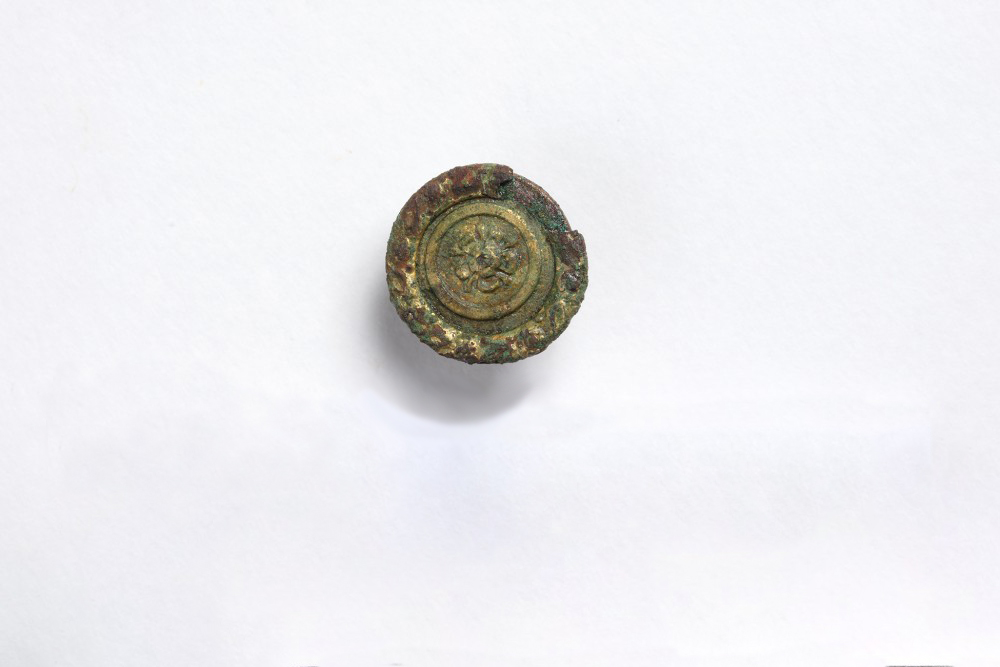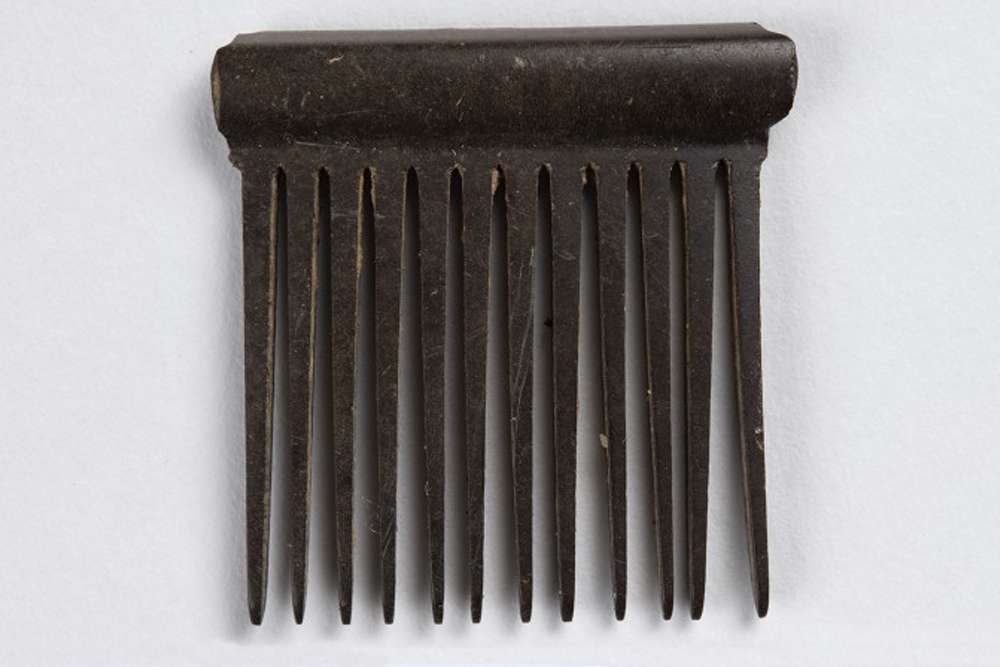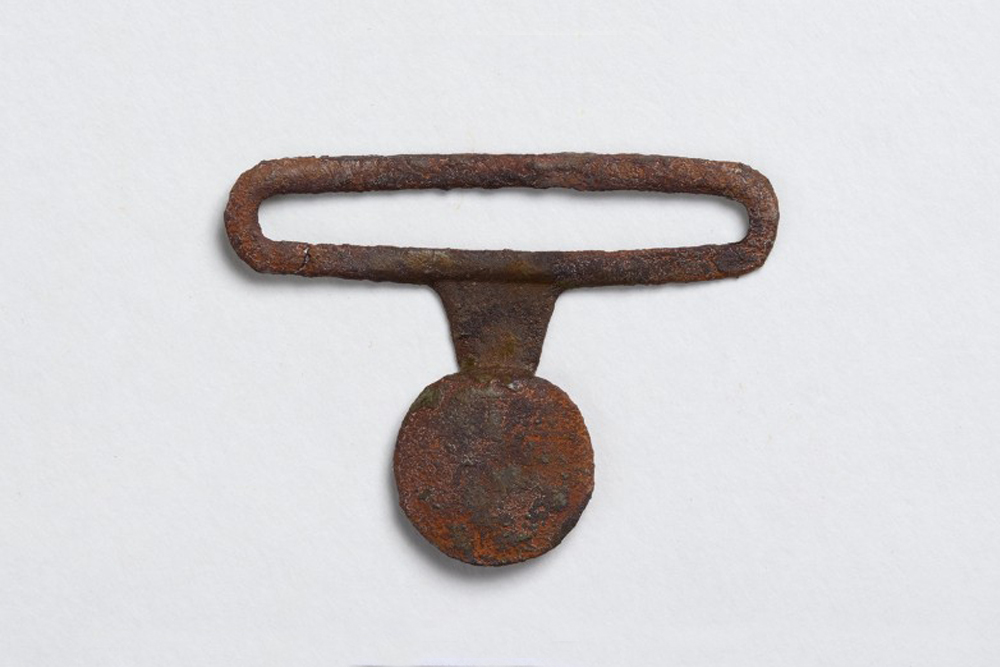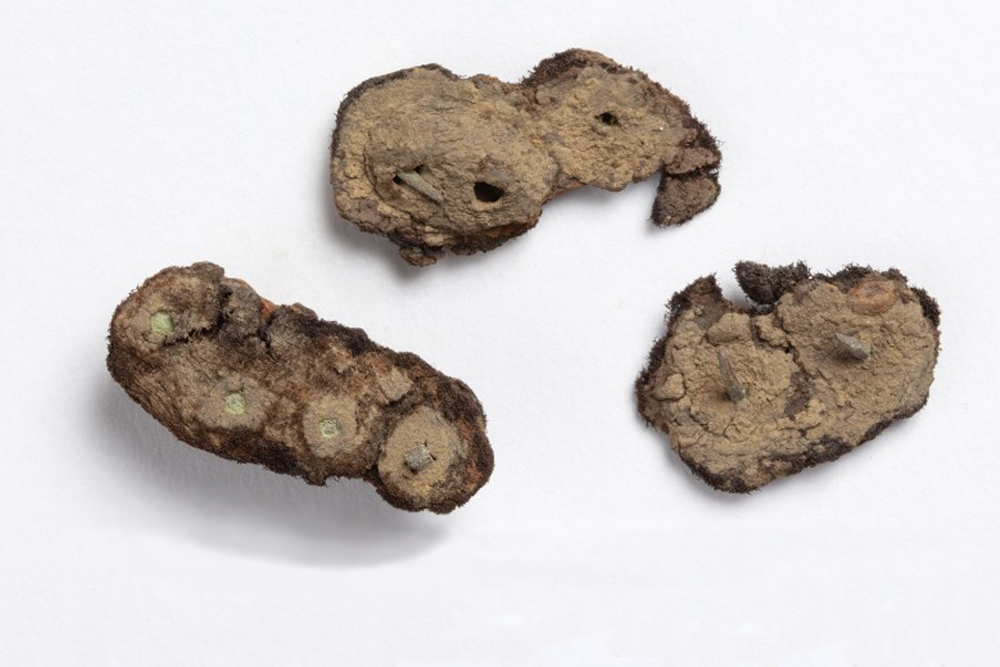Button
Buttons are an essential part of the clothes we wear, but are often overlooked, as we tend to focus more on the fabric and the value of the clothing we buy. However, this brass shank button, excavated from Seneca Village, allows for more exploration into how small artifacts can speak to the experiences and lives of people from the past. On another level, this button is representative of the hard work and dedication that many people, such as archaeologists and historians, put into this project in an effort to inspire others to look more closely at the history that lies in plain sight.
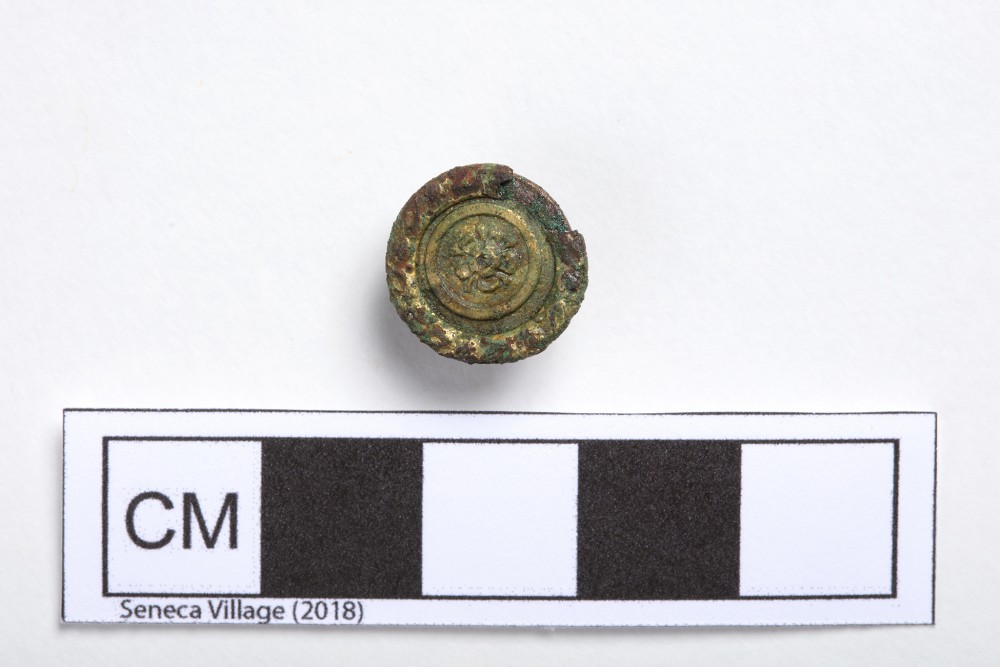
Figure 1: brass shank button excavated from Seneca Village (frontside). (Photo courtesy of the NYC Archaeological Repository).
About the Object
This button was made by the family-owned L. & Kendrick company, operated by Green Kendrick, Benjamin Franklin, and Mark Leavenworth in Waterbury, Connecticut during the early nineteenth century (Voss, 2005). Brass buttons were a staple of the time and were made by various companies across America. This button (Figure 1) has corroded due to its brass base and the base metal shank on the backside; both metals were popularly used for creating buttons such as this one (Samina, Karim, Venkatachalam 2011). The front of the button is engraved with a petunia with foliage around its perimeter.
Engraved buttons can be used to determine the socioeconomic status and social class of their owners. Buttons made of other materials, such as glass or bone, were more common for those of the lower class. The ability to own and wear buttons made of metal was a luxury that required spending a decent sum of money. The more intricate the engraved design, the more expensive the button. This particular button would have likely been worn by men of the middle class, which is why the button itself is small and the engraving simple (Marcel 1994, 11-12). These buttons became a staple of military attire, which would become common for those of the working class. Brass buttons could be found on items such as a dolman (Figure 3), which was a military tunic that soon became known as a day-to-day piece, suitable for informal work engagements. The backside of the button is engraved with the maker’s mark “L. & Kendrick / Extra,” a practice that extended itself to other button makers of this period (Marcel 1994, 9). It was a way to “sign” the work; today, it allows us to trace this button to its maker and to a specific time period.
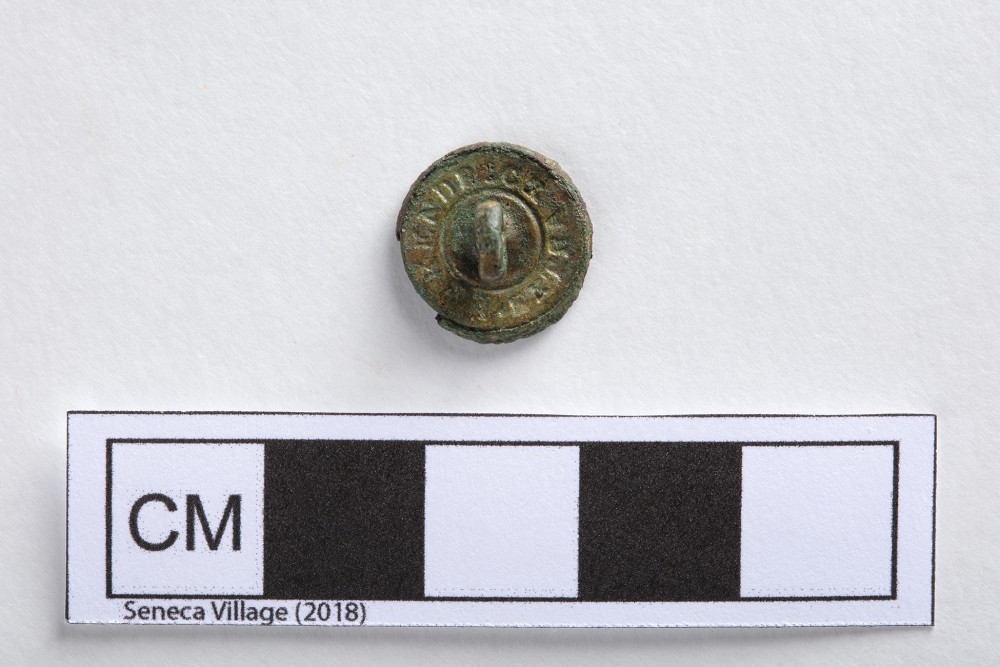
Figure 2: backside of the button with maker’s mark (Photo courtesy of the NYC Archaeological Repository).
How it Relates to Seneca Village
Measuring 1.5 inches in diameter, this button is one of the smallest whole items found during the excavation. This button and other similar pieces speak to the culture of Seneca Village and the desire its residents had to comfortably live in a city like New York. A common and inherently racist misconception of Seneca Village was that its residents were all of lower socioeconomic status (Chakraborty, 2020). This implied that they were unable to afford many of the luxuries that their elite counterparts could, which we now know was not true.
Artifacts like this button and others within the “Presentation of Self” section tell a different story. Just like those who donned beautifully-ornamented buttons on the Upper West Side, these residents had their own luxury goods. They lived in homes that were filled with beautiful ceramic dishes and wore clothes that reflected their affluence as members of middle- and upper-class families.
The takeaway from this excavation of Seneca Village is complicated, yet clear. These pieces allow us to experience and understand the rich (yet hidden) history of a park enjoyed today by tourists and New Yorkers alike.
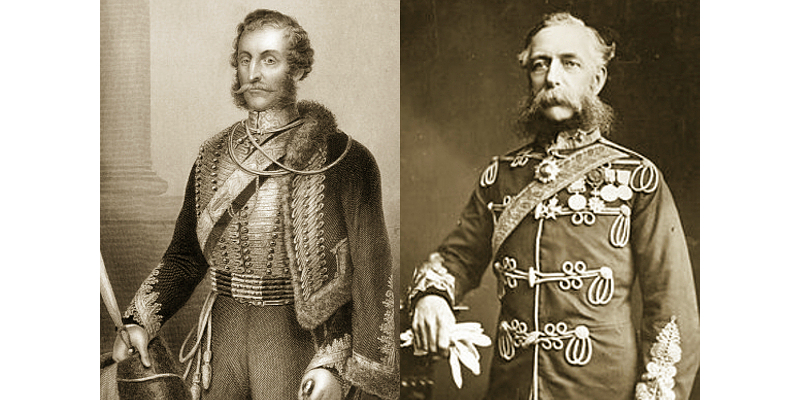
Figure 3: Lord Cardigan in an old style dolman, a sort of military tunic that became a day-to-day jacket where a pelise, rain cape, or some other attachment could be added. This item is covered in brass buttons like the one in Figure 1. (Fleming, R. S. 2014)

Figure 4: my drawing of the brass shank button
Works Cited
Chakraborty, R. 20 Jan, 2020. “The lost neighborhood under New York’s Central Park.” Vox. https://www.vox.com/2020/1/20/21070883/central-park-seneca-village.
Fleming, R. S. 28 Oct, 2014. “Victorian Fashion Terms.” Kate Tattersall Adventures (blog). http://www.katetattersall.com/victorian-fashion-terms-a-m/.
Marcel, Sarah Elizabeth. 1994. “Buttoning Down the Past: A Look at Buttons as Indicators of Chronology and Material Culture.” University of Tennessee Honors Thesis Projects. https://trace.tennessee.edu/utk_chanhonoproj/42.
Memon Samina, Abdul Karim, and A. Venkatachalam. 2011. “Corrosion Study of Iron and Copper Metals and Brass Alloy in Different Medium.” E-Journal of Chemistry 8, no. s1.
Voss, W. E. 2005. “Benjamin Franklin Leavenworth.” American Silversmiths. http://www.americansilversmiths.org/makers/silversmiths/225163.htm.

